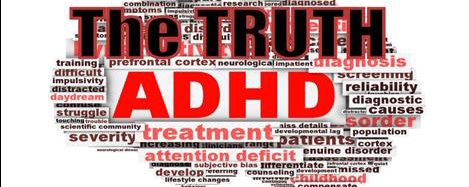In the last blog, I briefly went over how the Vigilance Regulation Model explains ADHD. Now let’s explore how this model can be deduced to relate to ADHD as it correlates with Sleep Parasomnias (disorders).
As you learned from my last blog, Vigilance Autostabiliztion (regulation), is labile (or unstable) in those suffering from ADHD. In other words, victims of the disorder have trouble remaining vigilant throughout the day, which impairs their abilities for sustained attention and leads to maladaptive vigilance regulation mechanisms, such as hyperactivity.
Studies have shown that vigilance regulation is robustly modulated by the sleeping processes that lead individuals from wakefulness to sleep, especially in individuals suffering from ADHD. Using the vigilance regulation model to interpret EEG, (electroencephalogram), readings, studies have shown that individuals with ADHD have abnormal brain wave activity, directly linked to, their inability to sustain vigilance throughout the day and as a result, demonstrate how vigilance, in ADHD subjects, heightens as the evening sleep hours loom in. (The EEG is a machine that tracks the brain waves of patients and subjects to determine abnormalities in such individuals relating to Psychopathologies, such as ADHD.) But we’ll go into that more deeply later, for now let’s focus on the relation between Sleep abnormalities and ADHD.
Research in this area, has found that up to 78% of adults suffering from ADHD, and 72-75% of un-medicated children possess “Idiopathic Sleep Onset Insomnia” (SOI), (Nigmegen, 2012). That is, a majority of ADHD victims have delayed sleep onset Insomnia, or, in other words, have trouble falling asleep. This subtype of ADHD is characterized by possessing a “Circadian Phase Delay,” or dis-regulation of their circadian rhythm, a phenomenon making it difficult to fall asleep during the hours, upon which, night falls. This subgroup have been shown to exhibit lower vigilance during the day, thus compensating for this lost vigilance at night; and hence designating these ADHD sufferers “evening types” (Nigmegen, 2012).
The predominate characteristics of SOI, include:
- That it manifests before the age of 3
- Is not related to Sleep Hygeine (or the routines people use to make themselves tired in order to fall asleep)
- And is associated with “Delayed Dim Light Melatonin Onset” (or DLMO)
More studies on sleep, and its relation to attention, cognition and vigilance, have revealed that “chronic but slight reductions in sleep” have cumulative effects on the preceding mental processes. Since SOI, manifests itself before the age of 3, and ADHD is diagnosed around age 5 and above, it seems relevant that the Circadian Phase Delay, related to SOI, may be a contributing factor in the cumulative chronic affects of sleep curtailment leading to the symptomology of ADHD. In fact, SOI may even be the “underlying Psychopathology in a number of individuals suffering from ADHD” (Nigmegen, 2012).
These individuals respond well to stimulant medication, because of its vigilance regulating affects during the day. However, stimulants fail to treat the underyling (and possibly etiological component) of this subtype’s symptomology, which is their sleep deprivation.
It has also been found that individuals who display ADHD symptoms, such as decreased attention, hyperactivity and impulsivity, are actually only suffering from sleep disorders, and not ADHD as a psychopathology. In this group of ADHD symptomatic types, stimulant treatment does not improve inattention, and other cognitive dysfunctions associated with ADHD, but instead, within this group, symptoms are alleviated by sleep treatments which mollify their underlying sleep disorder by normalizing their ability to sleep soundly and fully.
This research is beginning to shed light on how some subtypes of ADHD, can be more effectively and permanently treated through sleep intervention mechanisms, as apposed to Psycho-stimulant medications.
Read on in the next few blogs to see how ADHD and Insomnia are interrelated and possess a symbiotic relationship. Also, in my next few blogs I will go further into explaining pioneering treatments currently in development, which are aimed at reducing ADHD symptomology through lasting and finite Neurofeedback treatments, as apposed to that of Psycho-stimulant medication. So follow along to garner a simplified explanation that ties all the forgoing blogs together, and give you a comprehensive understanding of Insomnia, Sleep and ADHD.


Dаddy you didn?t say what the very best factor about God is.
Itts importnt to play too.
There are some interesting points in time in this article however I don’t know if I see all of them center to heart. There may be some validity however I will take maintain opinion until I look into it further. Good article , thanks and we wish more! Added to FeedBurner as effectively